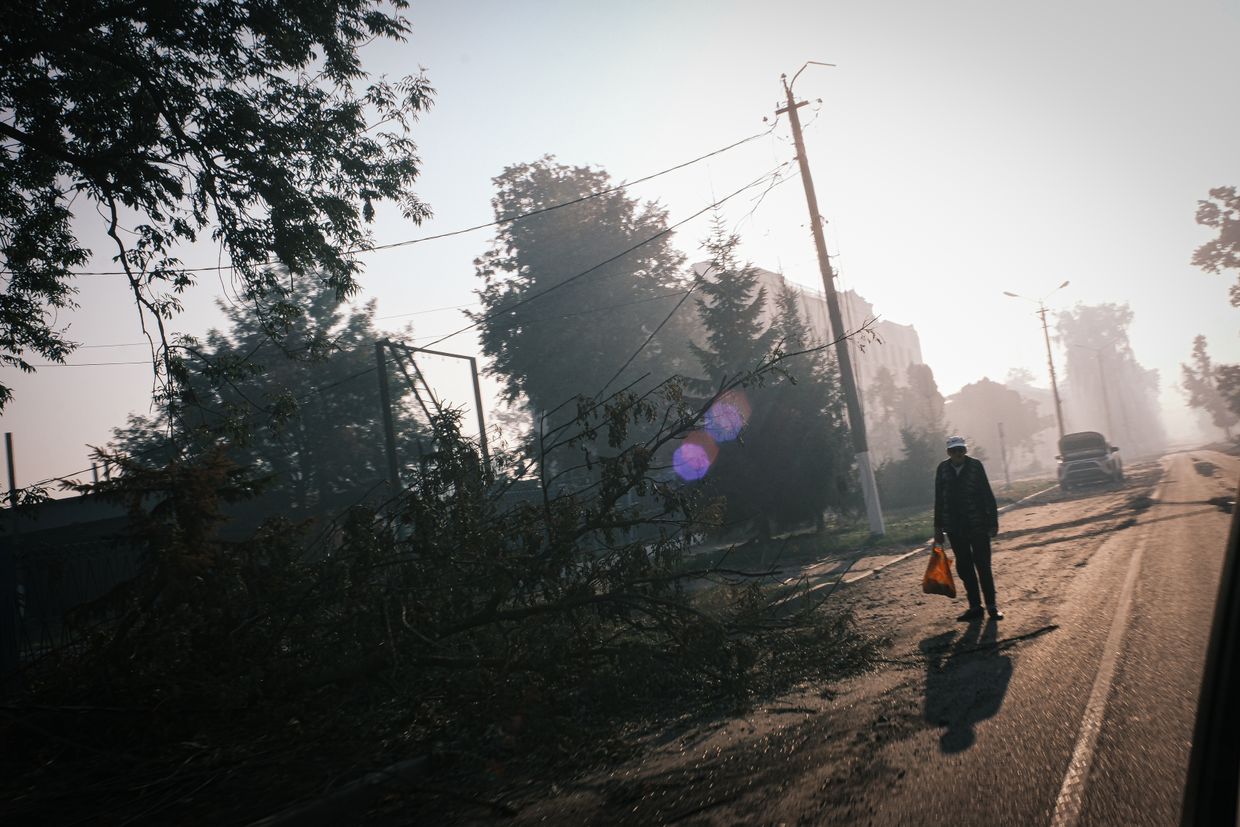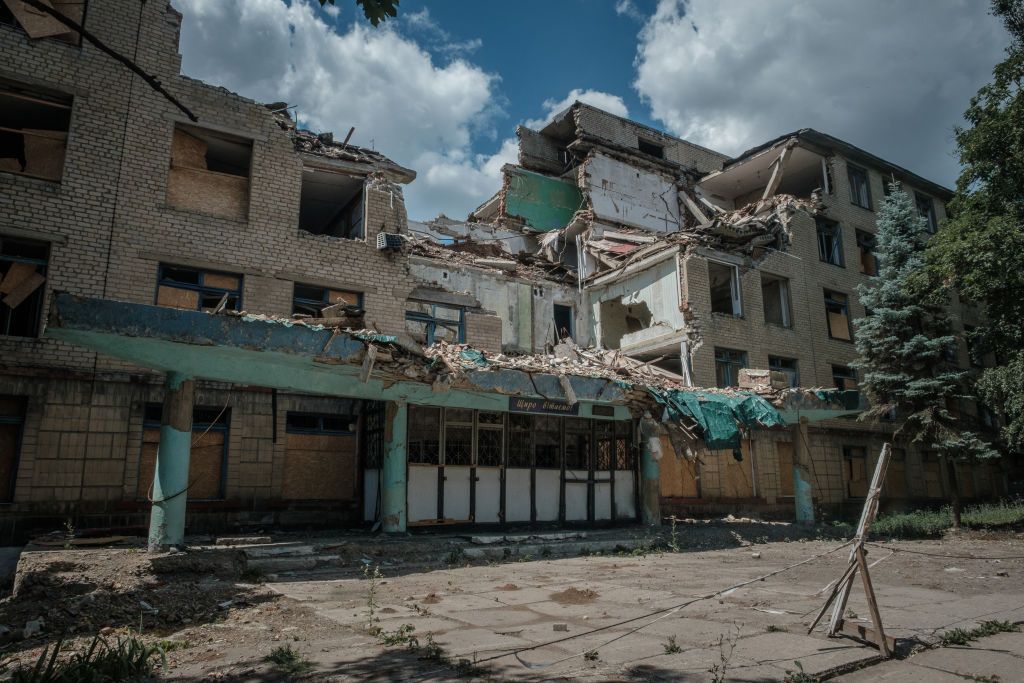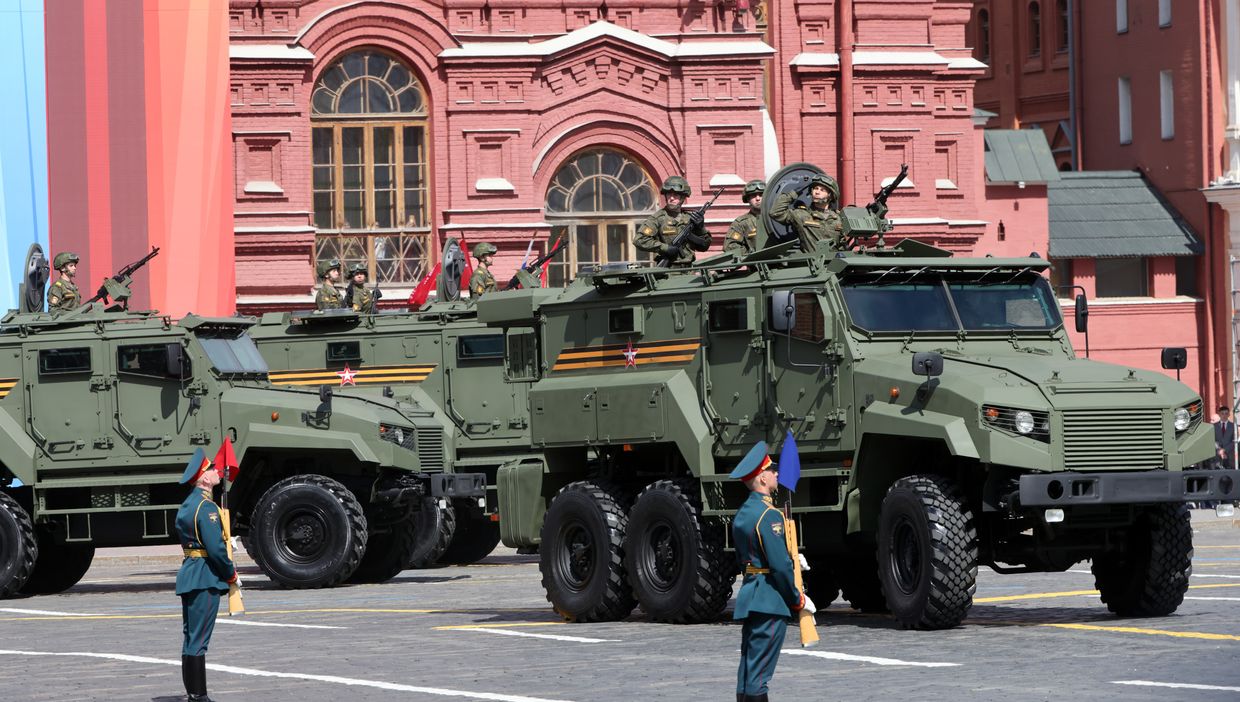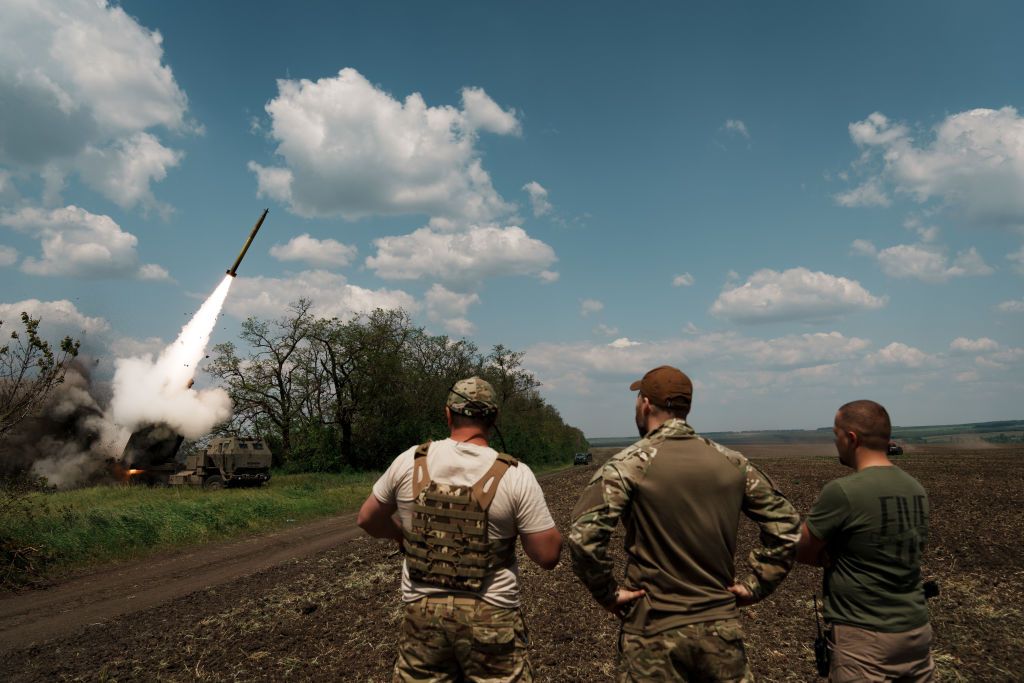Ukraine war latest: Ukrainian drones hit oil depots in Russia's Rostov, Kirov oblasts

Key developments on Aug. 28:
- Ukrainian drones hit oil depots in Russia's Rostov, Kirov oblasts
- Russian forces approaching town of Selydove in Donetsk Oblast, media reports
- Ukraine has invested $7 billion in defense industry this year, Umerov says
- Russia moves 90% of military planes beyond ATACMS range, US official claims
- UK privately backs Ukraine's use of Storm Shadow inside Russia but avoids spat with US, Telegraph reports
Ukrainian drones operated by military intelligence (HUR) hit oil depots overnight in Russia's Rostov and Kirov oblasts on Aug. 28, a HUR source confirmed for the Kyiv Independent.
The first Ukrainian attack on Kirov Oblast, located some 1,200 kilometers (745 miles) from the shared border with Ukraine, caused a fire at two oil tanks, according to the source.
According to Kirov Oblast Governor Alexander Sokolov, Russian air defenses shot down two drones while three others "fell" and started a fire near the Zenit oil facility in the town of Kotelnich. No casualties or damages were reported.
"The target is located more than 1,200 kilometers (745 miles) away from Ukraine's border. The Zenit oil depot is a facility of the enemy military-industrial complex and provides fuel to the Russian occupation forces," the source said.
The Kyiv Independent could not verify these claims.
In Russia's Rostov Oblast, fires are ongoing at the oil tanks of the FDKU Atlas oil facility, located near the Kamensk-Shakhtinsky town, the source said.
The town lies roughly 15 kilometers east of the border with Russian-occupied parts of Ukraine's Luhansk Oblast and around 170 kilometers (over 100 miles) from the front line.
The news follows a statement by Russian regional authorities that a fuel depot in the Kamensk-Shakhtinsky district caught fire following a Ukrainian drone attack. Russian media later reported another fire at a different oil depot in Rostov Oblast.
The source did not comment on the second depot.
According to the Russian Telegram channel Baza, two drones "fell" on the oil depot at around 3 a.m. local time, starting the fire. Three oil tanks were reportedly burning as of 4 a.m. No casualties were reported.
Russian Telegram channels also published purported footage of the burning oil depot, specifying its location near the village of Molodezhnyi, less than 30 kilometers (under 20 miles) south of Kamensk-Shakhtinsky.
"This facility is part of the Russian military-industrial complex and takes a direct part in supplying Russian occupation forces," the military intelligence source said.
The full consequences of the attack are being determined.
The Atlas facility belongs to Russia's Federal Agency for State Reserves and specializes in producing petroleum products for the Russian Armed Forces, according to the source.
Russian forces approaching town of Selydove in Donetsk Oblast, media reports
Russian troops are approaching the town of Selydove in Donetsk Oblast amid Russia's ongoing advance in the region, Ukrainian media outlet Hromadske reported on Aug. 28, citing its correspondent Diana Butsko on the ground.
Since the beginning of the full-scale war, Selydove has been regularly attacked by Russia, often resulting in casualties. The front line has inched closer to the town since Russia took Avdiivka in February and continues its advance towards the nearby city of Pokrovsk.
Fighting over the town has already begun. The Russian army is actively shelling Selydove, and many civilian infrastructure facilities have been destroyed, according to Hromadske.
Selydove, with a pre-war population of nearly 21,000 people, is located 18 kilometers south (11 miles) of Pokrovsk, which has been a focal point of Russia's offensive for recent months in the Donetsk sector of the frontline.
President Volodymyr Zelensky said earlier that Pokrovsk had become Russia's main target after its Kharkiv Oblast offensive failed.
The military administration of Pokrovsk called on residents on Aug. 15 to evacuate immediately, as the Russian army was about 10 kilometers (6 miles) from the town's outskirts.
As of Aug. 28, 38,000 people and 1,900 children remain in Pokrovsk, according to local authorities.
Ukraine has invested $7 billion in defense industry this year, Umerov says
Ukraine has invested $7 billion in the domestic defense industry so far in 2024, Defense Minister Rustem Umerov said on Aug. 27.
Kyiv has sought to dramatically increase its defense production capabilities since the onset of Russia's full-scale invasion in 2022.
Speaking at the "Ukraine 2024: Independence" forum in Kyiv on Aug. 27, Umerov said that Ukraine has already invested $7 billion in the defense industry in 2024 alone.
The funds are going towards drones, robotics, and electronic warfare systems, all of which are "already yielding tangible results on the battlefield," he said.
Ukraine is also looking to modernize the Armed Forces by implementing digital solutions in accordance with NATO standards, Umerov said.
Umerov said that Kyiv is working to secure permission from allies to use Western-provided long-range weapons systems to strike military targets. He described this as Ukraine's "key task."
The defense minister's remarks come in the wake of a series of devastating Russian attacks in the week after Independence Day. Russia targeted 15 of Ukraine's 24 oblasts on Aug. 26, launching over 200 missiles and drones as part of the largest-ever aerial attack against Ukraine.
The attacks underscore Kyiv's need to continue arming itself as Western allies limit the use of certain weapons due to fears of escalation with Russia.
Ukraine has its own versions of drones, sea drones, and planned versions of air defense systems.
Earlier this month, President Volodymyr Zelensky said the government will allocate additional funding for the country's missile program.
Russia moves 90% of military planes beyond ATACMS range, US official claims
Russia has reportedly transferred 90% of its military aircraft to bases outside the reach of long-range ATACMS, a United States official told the Wall Street Journal (WSJ) in remarks published Aug. 27.
The U.S.-made Army Tactical Missile Systems (ATACMS) have a range of approximately 165-300 kilometers. The U.S. first supplied long-range ATACMS to Ukraine in March of 2024.
Russia has responded to Ukraine's acquisition of ATACMS by moving most of its aircraft beyond the missiles' range, the unnamed official told the WSJ, citing a new U.S. intelligence report.
With 90% of the planes out of reach, striking deep inside Russia with ATACMS makes little strategic sense, the official claimed.
U.S. policy currently prohibits Ukraine from using American-supplied weapons to attack targets deep within Russian territory. Kyiv has lobbied Washington to lift these restrictions and allow Ukrainian forces to strike airbases and other military targets beyond the border zone.
The U.S. official also told the WSJ that Ukrainian forces may have better success striking Russian airbases using its own long-range drones.
Ukraine has been scaling up domestic defense production in order to strike key targets in Russia without regard to Western restrictions. The Palianytsia, a newly developed homegrown missile-drone, was designed to strike Russian airfields.
As Kyiv looks for ways to destabilize Russia's military assets, Russian forces over the past two days hit Ukraine with mass attacks. Russia on Aug. 26 launched over 200 missiles and drones as part of its largest-ever aerial attack throughout the full-scale war.
UK privately backs Ukraine's use of Storm Shadow inside Russia but avoids spat with US, Telegraph reports
The U.K. backs the use of Storm Shadow missiles by Ukraine for strikes deep inside Russia but will not pursue the call publicly, fearing disagreement with the U.S., The Telegraph reported on Aug. 28, citing undisclosed sources.
Ukraine has long been asking its Western partners for permission to use long-range missiles, like the Storm Shadow or American ATAMCS, inside Russia.
Previous statements by British officials have caused confusion about the U.K. government's stance on Ukraine's use of Storm Shadow missiles.
The Times reported on Aug. 17 that the British government asked the U.S. for permission for Ukraine to use British Storm Shadow missiles inside Russia but is yet to receive a positive response.
In turn, The Telegraph claimed that the U.K. sent no official request to the U.S. on this matter as Washington's concerns about Ukraine using Western-made long-range missiles inside Russia have been made clear to London.
The outlet explained that the U.K. does not solely decide on the use of Storm Shadows as the missiles are used together with classified U.S. systems and, therefore, require Washington’s permission.
British official sources told the Telegraph in July that granting Ukraine the permission to use Storm Shadows to strike deep into Russia would require an agreement among three countries, including the U.K.
Though the sources did not name the other two countries, France appears a likely candidate as it produces its own variants of Storm Shadow called SCALP/T, which have also been supplied to Ukraine.
The stance of Ukraine’s most prominent allies, including the U.S. and the U.K., on long-range strikes inside Russia has not changed since the beginning of Ukraine’s incursion into the Kursk Oblast of Russia.
Western partners justified their reluctance by a fear of escalation, a concern dismissed by Kyiv.
Ukraine’s Foreign Ministry spokesperson claimed that if Ukraine could hit targets inside Russia with long-range Western missiles, the Kursk incursion would be a "less necessary" move.
As Washington remains reluctant on the issue, Ukraine is developing its own means of attacking deep inside Russian territory. President Volodymyr Zelensky announced on Aug. 27 that Ukraine has successfully tested its first domestic-made ballistic missile.
Ukraine also recently unveiled its new Palianytsia missile-drone, designed to strike Russian military airfields and "destroy the enemy's offensive potential."
















